Triumph India believe there is a market for a friendlier version of the Speed 400. Here is what you should know about the Speed T4.
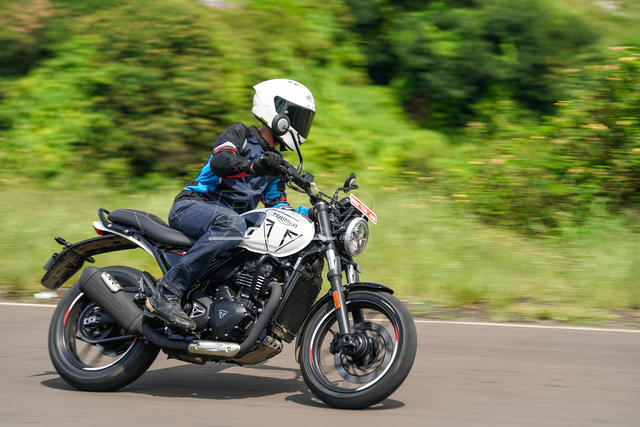
Story: Joshua Varghese
Photography: Sanjay Raikar
The Triumph Speed 400 was welcomed with open arms when it was launched in India. What was not to like about an accessible motorcycle from a premium brand that was good to look at and great to ride?
Turns out there were people who wanted a friendlier version of the Speed 400. Simply put, they were willing to sacrifice some speed for a leisurely pace and more comfort. Of course, a lower price tag is always welcome. That is the space the Triumph Speed T4 aims to fill. To make the difference between the Speed T4 and the Speed 400 clear, we will draw several comparisons between them throughout this road test.
The quality of materials and overall fit-and-finish is identical for both motorcycles but some changes have been made to the exterior to set the T4 apart; such as three unique colours. It also gets stem-mounted mirrors which we feel are better for our conditions. Like many motorcyclists, we also admired the Speed 400’s brushed metal finish for the exhaust system. Predictably, we are not fans of the blacked-out treatment for the lower half of the T4. It feels like some of the timeless elegance is missing.
Once astride the T4, the changes may not be evident but a closer look will reveal that the handlebar is a steel unit, not an aluminium one. The contour of the rider’s seat has been revised to make it more accessible for short riders. Furthermore, additional padding for the pillion seat has improved overall comfort.
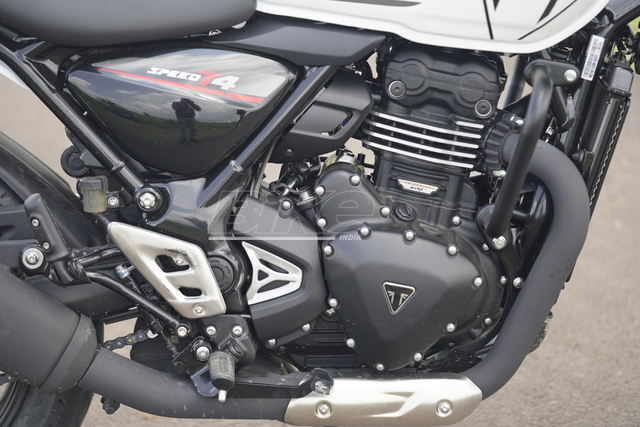
Significant changes have been made to the 398-cc, liquid-cooled, four-valve, DOHC, single-cylinder engine to make it comply with the new expectations. Bajaj claim that they began by optimising the induction system. In addition to the revisions made to the air filter and intake, the diameter of the throttle body has been reduced. The engine now develops 31 hp at 7,000 rpm and 36 Nm of peak torque at 5,000 rpm. It may be nine hp and 1.5 Nm less than the Speed 400 but the T4 develops peak power and torque earlier in the rev range. Sure, it lacks the upper mid-range and absolute top-end of the Speed 400 but the bottom-end feels just as strong. Actually, according to the graphs shared by Triumph, the T4 is stronger at slower engine speeds.
By increasing the weight of the crank at the flywheel end for more inertia, Triumph have made the T4 very enjoyable from as low as 3,000 rpm. Furthermore, they confirmed that the cam timing has been changed too. In the real world, one is most likely to feel the difference in performance while overtaking or going uphill with a pillion. A manoeuvre that the Speed 400 can execute in fourth gear may require third gear for the T4. It is also worth noting that Triumph have made the final gearing taller. The rear sprocket has 39 teeth as compared to the Speed 400’s 43 teeth. The difference in top speeds is not much either; 145 km/h for the Speed 400 and 135 km/h for the T4. Despite the taller gearing, Triumph claim that the T4 has a lower top speed due to its power deficit. The T4 accelerates from 0-100 km/h in 8.9 seconds which is a little more than one second compared to the Speed 400. By the way, if you are a fan of electronic rider aids, you don’t get any of it in the T4. Honestly, it doesn’t need it anyway.
The exhaust has been revised as well so the T4 sounds a bit different too. Fuel-efficiency is, perhaps, the most important benefit brought by all these changes. The T4 claims to return four more km/litre than the Speed 400.
The suspension has been changed at either end. Of course, the conventional front fork replacing the USD unit is the most evident. A monoshock unit continues to suspend the rear but Bajaj claim that it is not identical to the Speed 400’s. As expected, the setup is not as sporty as the Speed 400 but it is not as plush as we would have liked either. While the front fork is damped well and absorbs bumps nicely, the rear monoshock’s character is more sporty than comfy. While we can’t say it is uncomfortably stiff, it is not as forgiving as one would expect of a laid-back motorcycle. Interestingly, the T4 has 10 mm less travel at the rear than the Speed 400. Rake remains unchanged while trail has changed which has increased the wheelbase by 20 mm.
No radial tyres for the T4. In fact, the sizes are different too; 110/70-17 at the front and 140/70-17 at the rear. With its MRF cross-ply tyres and new suspension, the T4 does not carve corners like the Speed 400 but it is extremely fun to ride nevertheless. It feels well balanced and responds to steering input with remarkable accuracy. It does not get radial callipers either but the axial calliper-organic brake pads combo lives up to expectations and gets the job done adequately well. Nothing to complain about there.
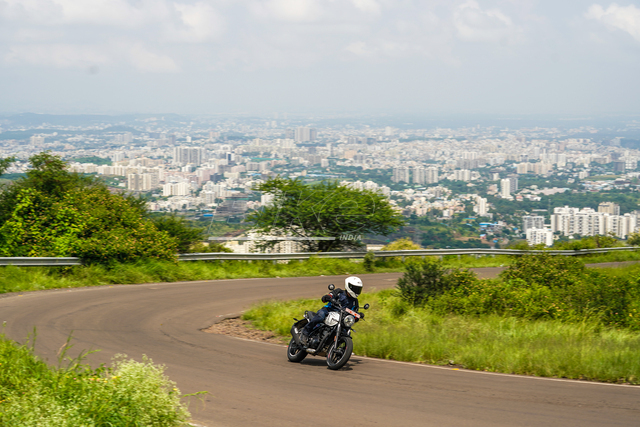
At Rs 2.17 lakh (ex-showroom), the Speed T4 is only Rs 23,000 more accessible than the Speed 400. As a motorcycle, it is difficult not to like the T4. It lives up to its claims well and is genuinely enjoyable to ride, be it in town or along a quiet road, but the pricing is unconvincing. Had Triumph equipped it with the aluminium handlebar and given it the same aesthetic finishing as the Speed 400, it would have easily disrupted the market. Right now, I feel it makes a stronger case for its sibling than it does for itself.
Watch the full review here:
Also Read: TVS Apache RR 310 2025 Review

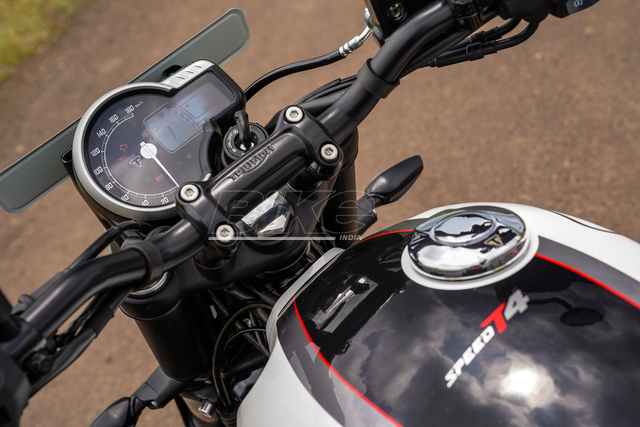
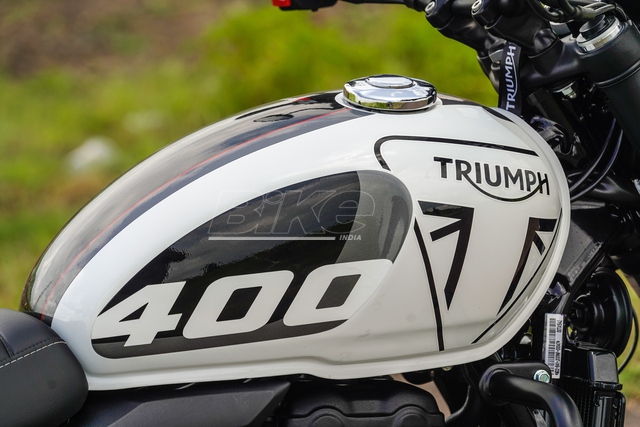
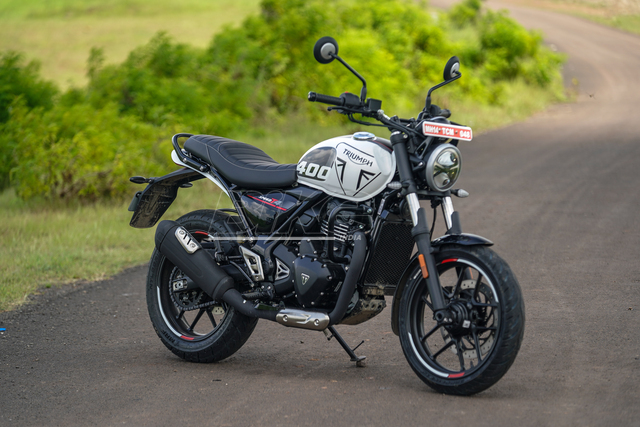
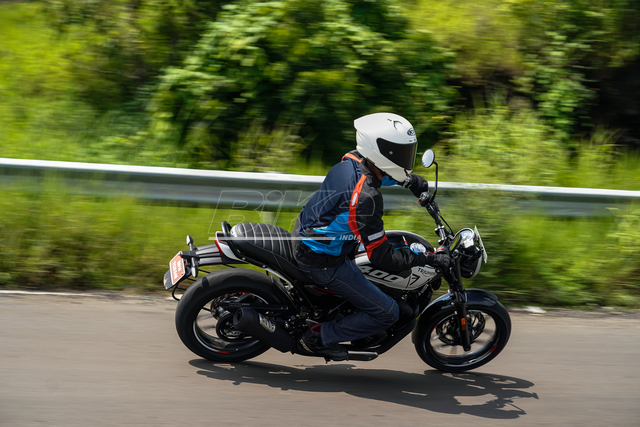
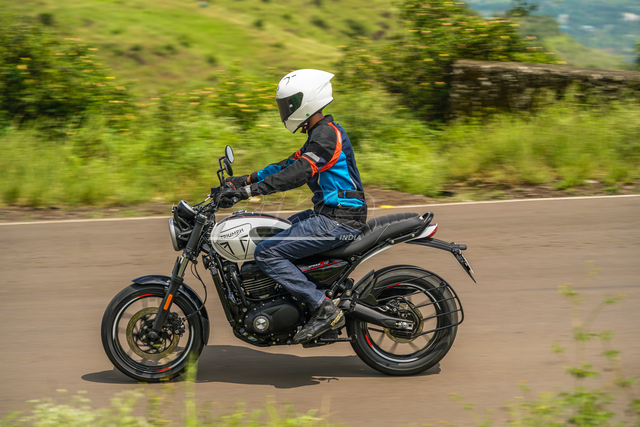

Leave a Reply